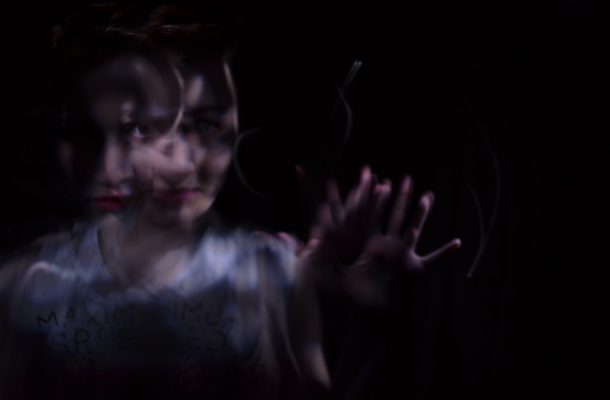One of our most powerful emotions is fear, which is often further associated with a host of other feelings, including (among others) helplessness, anxiety, confusion and disgust.
Fear can be due to anticipating an event – in which case it would be termed terror – or is the result of one, and hence constitutes horror. Or, based on the definitions of 18th-century English writer (and widely known as the mother of gothic literature) Anne Radcliffe (1764-1823), terror “expands the soul, and awakens the faculties to a higher degree of life”, while horror “contracts, freezes, and nearly annihilates them”.
Whichever the case, fear is what happens when we’re confronted with our own limitation, fragility and, most of all, mortality, as a species.
Based on the description above, it is safe to say that fear would not be generally considered a positive experience.
Yet, throughout the world, millions of normal, unprepossessing people – especially youths – are participating every day in activities with the main objective of deliberately encountering fear, whether it’s in the form of bungee jumping, extreme sports, rollercoaster riding, or, most common of all, watching a horror movie.
For them (or should I say us, since I am one of those with a penchant for the latter two thrills), being scared is actually entertaining and a chance to test or increase their tolerance for fear that has nothing to do with displaying machismo or orchestrating an excuse to, ironically, cosy up to someone.
That all the activities mentioned are invariably controlled conditions is undoubtedly an important reason behind their excitement and pleasure. But this alone cannot be an adequate explanation for why people pursue them.
Take viewing horror movies – arguably the tamest of the lot in terms of fear factor.
The fact Michael Myers from Halloween and the possessed Regan from The Exorcist are fictional (although the latter is admittedly based on a true event) doesn’t seem to mitigate audiences’ intense reactions towards them.
As evident in a YouTube video of audiences’ responses to the original version of Halloween, palpable gasping and screaming could be heard each time the serial killer appears, thus forever searing the terror of William Shatner/Captain Kirk’s face (on whom Myers’ mask is based) into the minds of an entire generation.
More extreme is the case with The Exorcist, with viewers fainting, fleeing the venue (only to return, over and over again), crying (including men), and even doing a version of Regan spewing green gunk – actually pea soup – but onto (hopefully) the theatre’s unfortunate floor.
All this inevitably begs the question: notwithstanding its controlled nature, why would anyone subject him/herself to such gut-wrenching – figuratively and literally – involvement?
There have been various, sometimes contradictory, psychological and philosophical theories proffered to potentially unravel the oxymoronic situation of why we delight in dread.
Below is a brief account of some of them. Note, however, that most of them pertain mainly to the cinematic experience, although a few are applicable to other nerve-wracking ventures as well.
A womb from which to view
The first has to do with our repressed desire to return to, or reproduce, the safety and familiarity of the maternal womb. Simulating such a scenario is thus the enclosed seating space in a darkened cinema where the viewer is exposed to, but ultimately protected from, the other (i.e. screened) world and its unfamiliar monster.
Alternatively, and also a psychoanalytical surmise, the fearful creature is a symbol of unconscious communal anxiety, whose collective viewership proves cathartic, as it allows us to work through, and surmount, that anxiety together.
A death wish
Yet another psychoanalytically inflected perspective is derived from Sigmund Freud’s (1856-1939) Thanatos, or the death instinct. A concept developed late in Freud’s career after the events of WWI, it presupposes a drive that inclines every individual towards self-destruction, thereby precipitating acts that allow him or her to dally with, and vicariously or even potentially achieve, oblivion.
Indeed, when considering consumers’ demand for scarier horror films and more cinematic violence, and the number of people injured and killed while engaged in extreme sports, such a prospect is not that far-fetched after all.
The art of horror
Then there is philosopher Noel Carrol’s (1947-) insightful, if also problematic, notion of “art horror”, which he differentiates from “natural horror” in that the former concerns horror that viewers understand is related to aesthetics.
A supposition somewhat akin to the controlled environment one, “art horror” implies that Frankenstein’s progeny, the vampires in the Thirty Days of Night graphic novel series, the monsters in the Aliens Versus Predators franchise, and the grotesque depiction of hell in a Hieronymus Bosch’s painting – among others – may be disturbing, but the emotion they generate is fundamentally an aesthetical, and not a “natural”, response.
Accordingly, since this feeling of dread is “not real”, it may be cultivated instead for enjoyment because of the catharsis fear offers.
The sub(s)lime
A final theory is related to the sublime, a metaphysical concept, the roots of which can be traced back to the ancient Greek thinker, Cassius Longinus (c. 213-271).
Describing both the object experienced and the experience itself, the sublime presupposes an encounter with something awesome that momentarily overwhelms the individual, who nevertheless subsequently surmounts his or her paralysis to gain control of his or her emotion and domesticate the object.
In this regard, watching a horror movie has therefore less to do with being frightened and more with dominance over otherness and self-mastery.
Whichever theory you subscribe to, it is undeniable that fear can be fun (although, I suspect, at a diminishing rate the older we get for the obvious reason).
This article was published by Lens.













